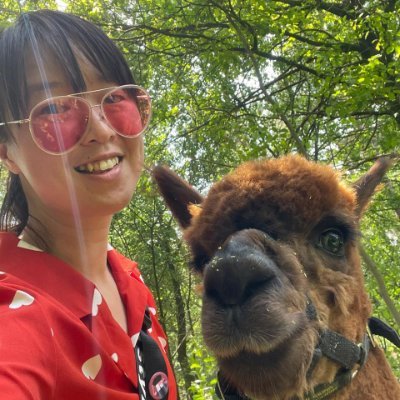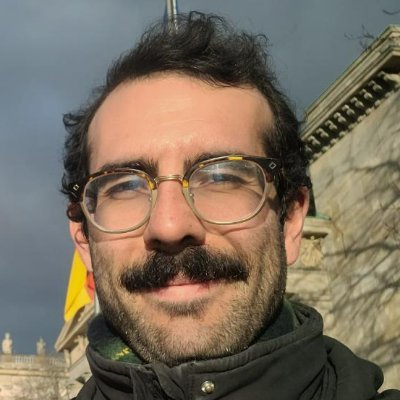
Dr. Xiaochen Y Zheng
@xwhyzheng
Followers
342
Following
195
Media
66
Statuses
238
1️⃣I am a cognitive neuroscientist @DondersInst 2️⃣I love my job because I don’t have to get up early in the morning3️⃣2 is just kidding - my boss is on Twitter
Joined September 2015
Thrilled to receive the #Veni grant from @NWOFunding !.This incredible opportunity supports my research on “The age of information overload: how do we control what we say?”. Grateful to everyone who has supported me on this journey!🥰.
NWO has awarded Veni funding of up to EUR 320,000 to 174 promising researchers from across the full breadth of science. This will allow the laureates to further develop their own research ideas over the next three years.
5
2
21
Thanks to @in_interaction @DondersInst for funding this work. ❤️🧠.
0
0
0
Our findings indicate that linguistic composition does not necessarily rely on the prefrontal-hippocampal network, challenging the view that hippocampal-based representational codes are universally applicable.
1
0
0
Using RSA, we found that the composition process recruits abstract rule representations in a lateral frontoparietal #cognitivecontrol network rather than the predicted medial frontotemporal #cognitivemapping network.
1
0
0
Our results show that this compositional process in language engages a broad temporoparietal network, including the hippocampus, while composed meaning representations were uncovered in left-lateralized key language areas.
1
0
0
We introduce an experimentally controlled artificial learning paradigm that allows us to identify the neural mechanisms by which participants efficiently infer novel, compositional word meanings via generalizing recently learned relational rules to novel situations.
1
0
0
In this work, we investigates the brain’s ability to learn and abstract generalizable knowledge. This cognitive flexibility is exemplified by human language, one of the most advanced cognitive functions, enabling the creative expression of an infinite array of thoughts and ideas.
1
0
0
🚨Very excited to share our new preprint "Abstract rule generalization for composing novel meaning recruits the frontoparietal control network". Team work with @mona_garvert @HannekedenOuden Lisa Horstman, David Richter @CoolsControl. 🧵👇.
1
2
7
RT @laurajspeed: Excited for @asifa_majid 's Elman symposium this afternoon @cogsci_soc Please RT because our talks aren't listed in the pr….
0
14
0
The paper is now online @EJNeuroscience 😉. PS: happily marked as my first senior author paper 🎉.
onlinelibrary.wiley.com
We demonstrated midfrontal theta power modulation in (1) language switching and (2) error monitoring, but not in (3) inhibitory control. The results tentatively support the involvement of domain-ge...
Check out our new work with @CuiNingjing @vipiai , where we show the (partially) shared neural signatures between language control and action control. 🧠 〰️🗣️🎮.
1
1
6
Let me draw your attention to our "un-ignore-able-ish" work. We quantified the human ability to generalize previously learned knowledge to novel situations, using an artificial language. w/@CoolsControl @mona_garvert @HannekedenOuden and my amazing students Anna and Jonne🥳.
0
0
6
Check out our new work with @CuiNingjing @vipiai , where we show the (partially) shared neural signatures between language control and action control. 🧠 〰️🗣️🎮.
Domain-general cognitive control processes in bilingual switching: evidence from midfrontal theta oscillations #biorxiv_neursci.
0
1
6
The article is open access. Data and codes of the original study see here: Additional data and codes for the current follow-up study see here:
1
0
1
Our study shows that the hippocampal-entorhinal system encodes diverse relational structures in which a stimulus is embedded. This enables flexible selection of relevant knowledge in order to guide goal-directed behavior in novel situations.
1
0
0
Notably, although both map-like structures were represented in the hippocampal-entorhinal system, they show distinct spatial organization: the semantic map was localized in more posterior regions than the transition structure.
1
0
0
Using fMRI adaptation analysis, we showed a map of semantic relationships between objects that was precisely localized in the hippocampus, alongside the previously identified map which coded for the newly learnt transition structure.
1
0
0
We used a triplet odd-one-out task to construct a model of object similarity. By matching the stimuli in Garvert et al. (2017) with photographs of the same objects which have different visual features, we were able to separate semantic relationships from perceptual attributes.
1
0
0














